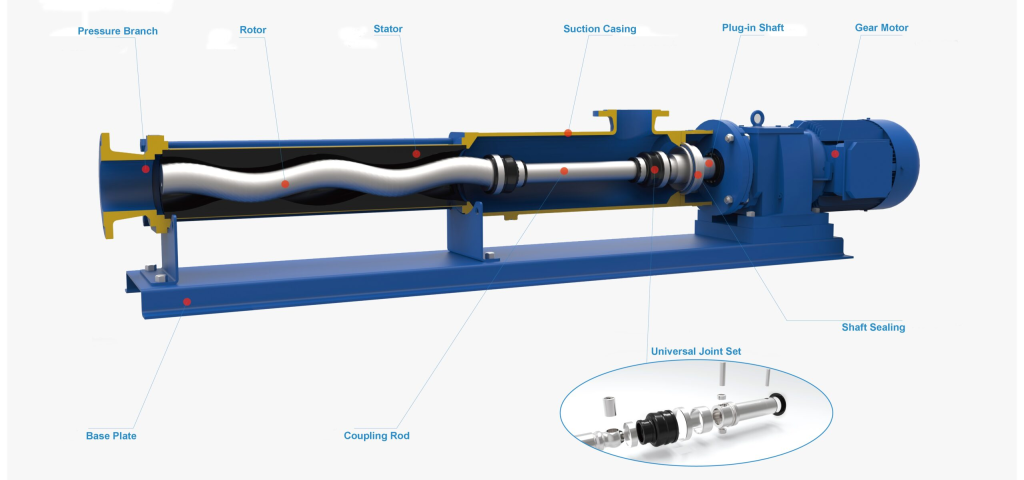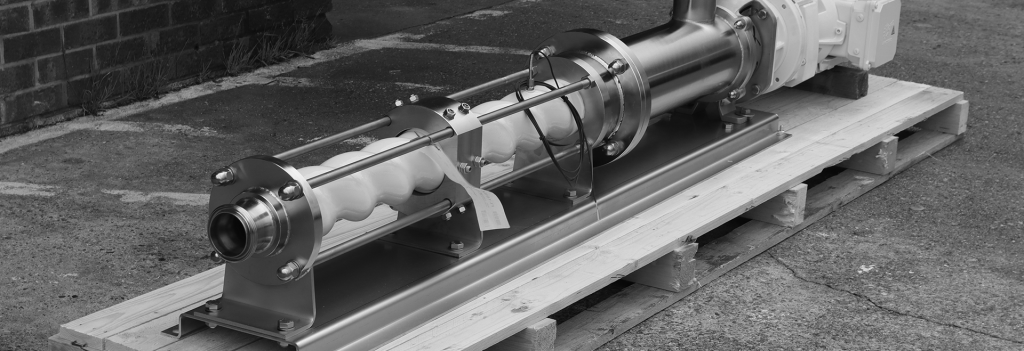Progressive cavity pumps are a type of positive displacement pump commonly used to transport viscous fluids with solids. This guide provides an in-depth overview of the progressive cavity pump, its working principle, advantages, applications, maintenance, and troubleshooting.
1. Working Principle
- Design: A progressive cavity pump consists of a single helical rotor that rotates within a double helical stator. The rotor’s rotation creates cavities that move the fluid through the pump.
- Mechanism: As the rotor turns, the fluid is drawn into the cavities formed between the rotor and stator, allowing for smooth and continuous flow. The action of the rotor creates a vacuum that pulls the fluid into the pump.
2. Key Components
- Rotor: A helical screw that rotates to move the fluid.
- Stator: A stationary component that provides a casing for the rotor, typically made of elastomeric material.
- Drive Shaft: Connects the rotor to the motor, allowing for rotation.
- Seals: Prevent fluid leakage and maintain pressure.

3. Advantages
- Versatility: Suitable for pumping a wide range of fluids, including viscous, shear-sensitive, and abrasive materials.
- Smooth Flow: Provides a constant flow rate with minimal pulsation, making it ideal for sensitive applications.
- Self-Priming: Capable of handling low-viscosity fluids and can operate with air or gas entrained in the fluid.
- Durability: Designed to handle abrasive and corrosive materials with appropriate materials of construction.
4. Applications
Progressive cavity pumps are widely used in various industries, including:
- Food and Beverage: Transporting slurries, pastes, and other viscous products.
- Wastewater Treatment: Moving sludge, wastewater, and other thick fluids.
- Chemical Processing: Handling corrosive and hazardous fluids.
- Oil and Gas: Pumping crude oil, drilling mud, and other viscous fluids.
- Pharmaceuticals: Moving shear-sensitive products and formulations.

5. Maintenance
To ensure optimal performance and longevity of progressive cavity pumps, regular maintenance is essential:
- Lubrication: Ensure proper lubrication of moving parts to reduce wear.
- Inspection: Regularly check seals and gaskets for wear and replace as necessary.
- Cleaning: Periodically clean the pump to prevent buildup of materials that could hinder performance.
- Alignment: Maintain proper alignment of the drive shaft to prevent excessive wear.
6. Troubleshooting Common Issues
A. Low Flow Rate
- Possible Causes:
- Clogged inlet or discharge lines.
- Worn rotor or stator.
- Insufficient NPSH (Net Positive Suction Head).
- Solutions:
- Inspect and clean the lines.
- Replace worn components.
- Ensure adequate suction conditions.
B. Excessive Wear
- Possible Causes:
- Pumping abrasive materials.
- Incorrect material selection for rotor and stator.
- Solutions:
- Use wear-resistant materials.
- Regularly monitor and replace worn components.

C. Leakage
- Possible Causes:
- Worn seals or gaskets.
- Improper assembly.
- Solutions:
- Inspect and replace seals as needed.
- Ensure proper assembly during installation.